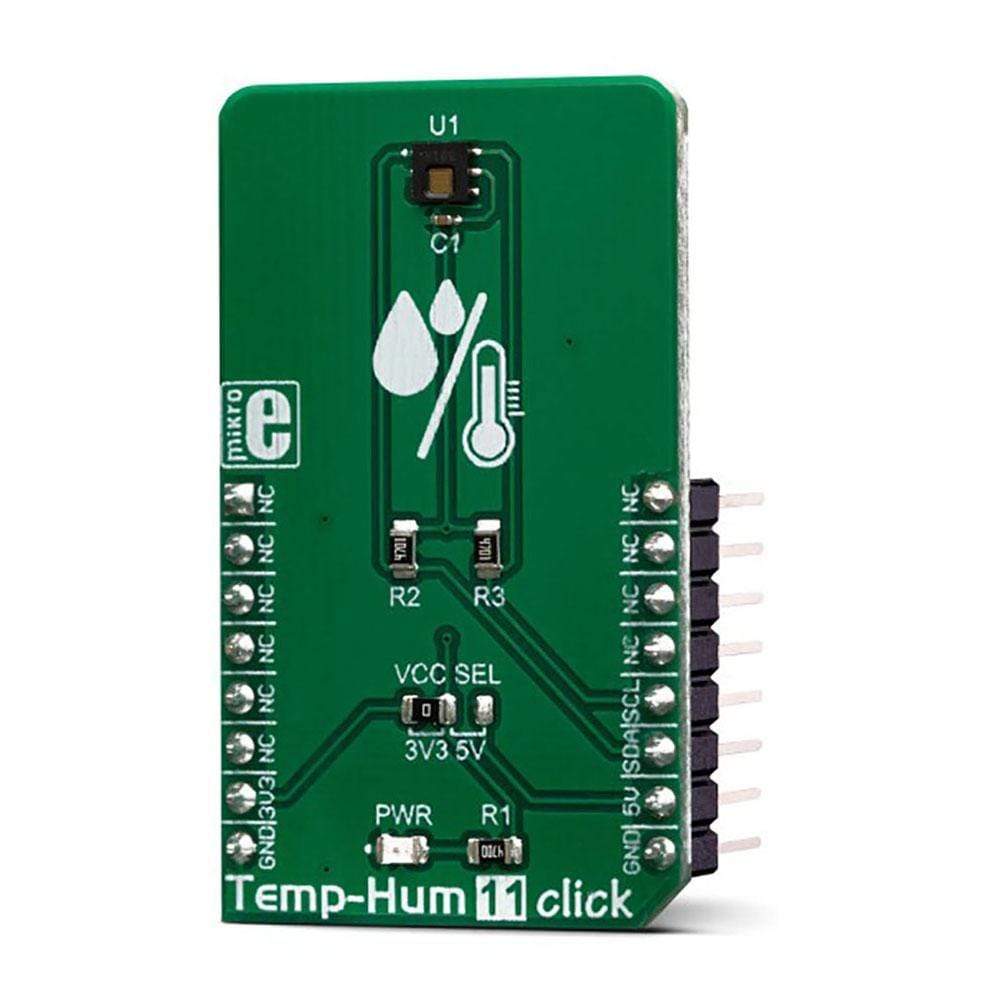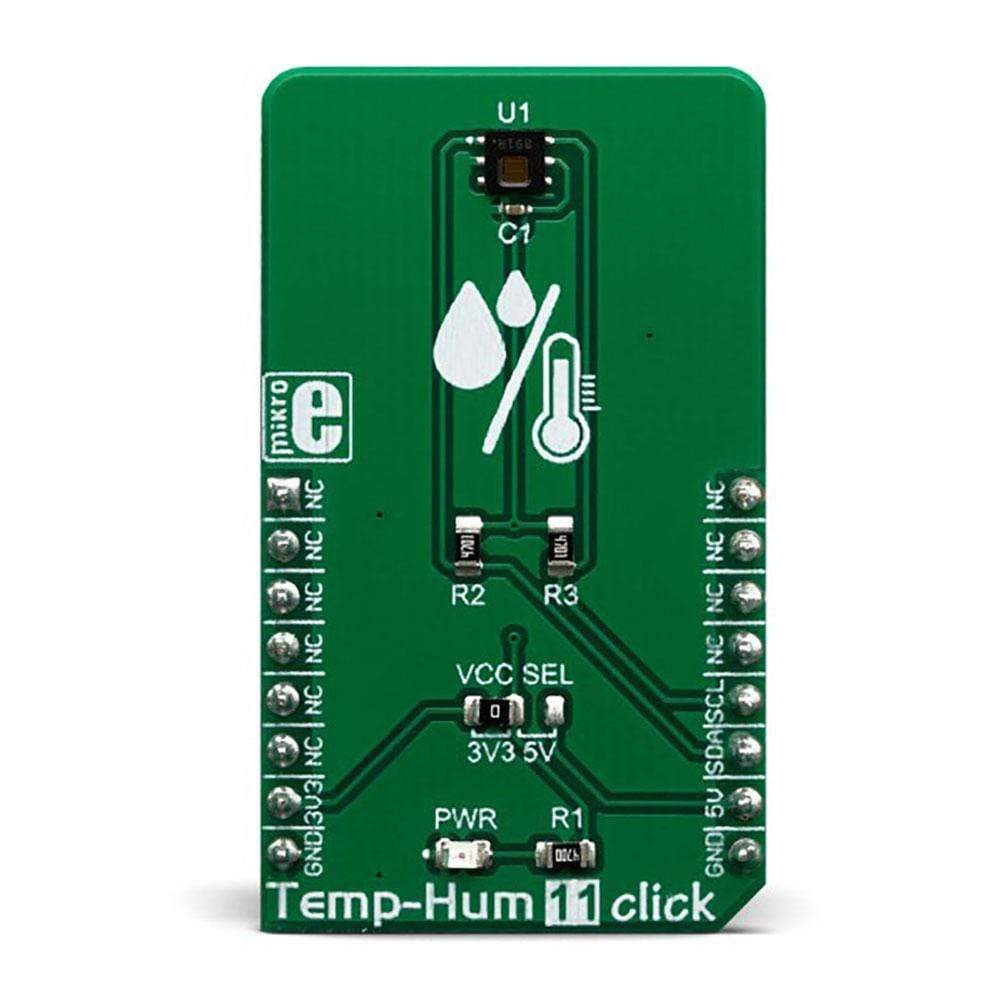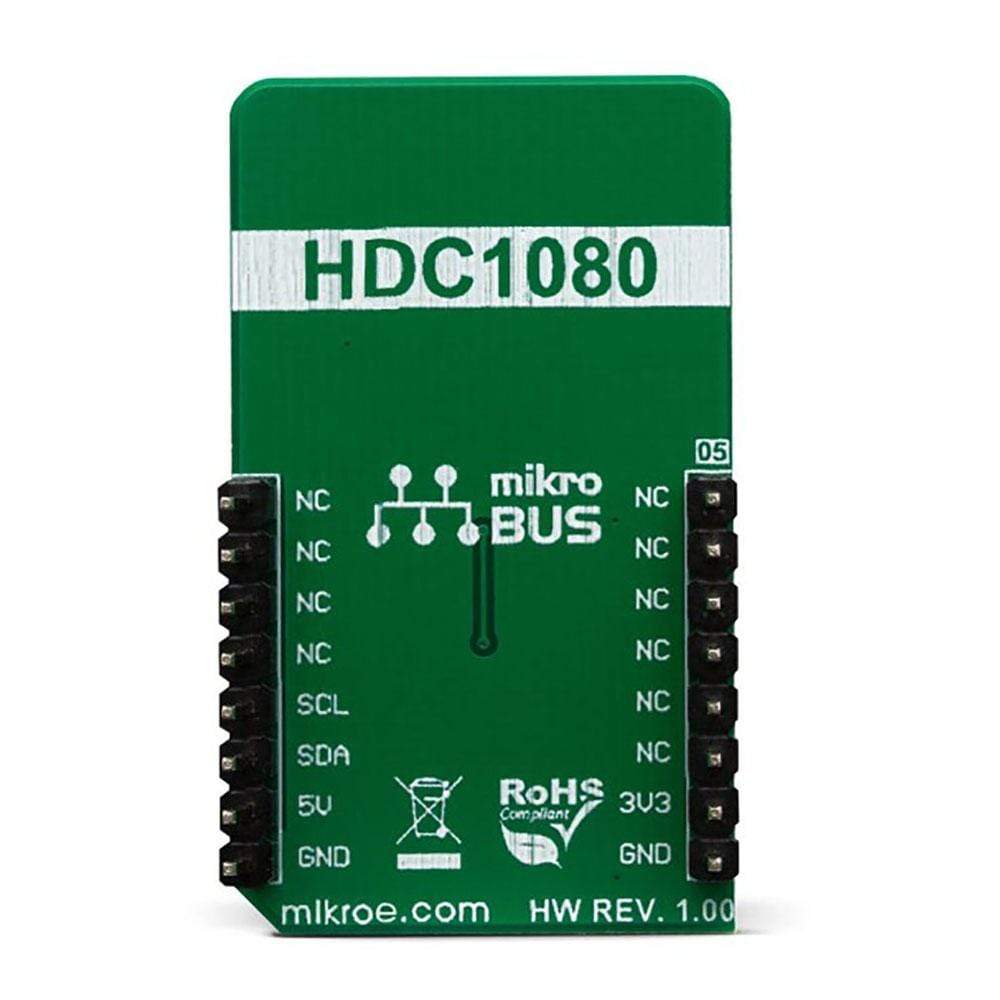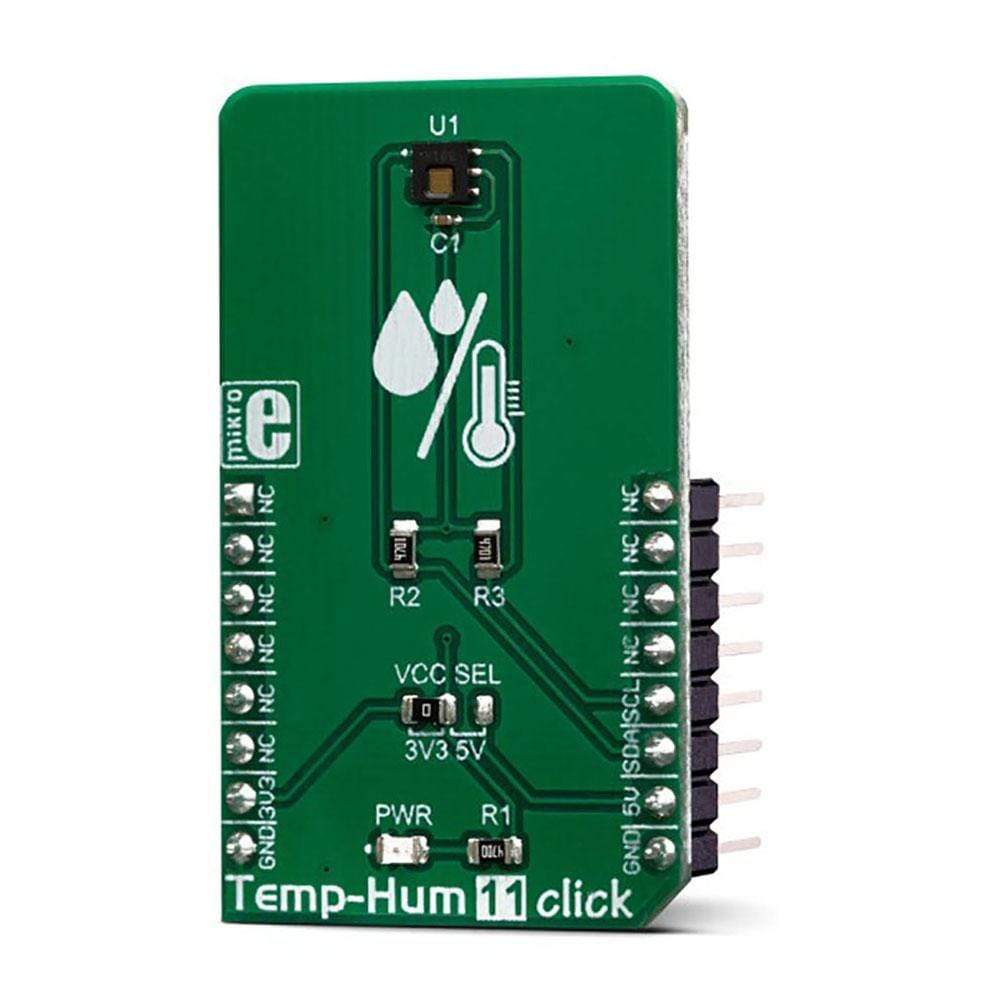
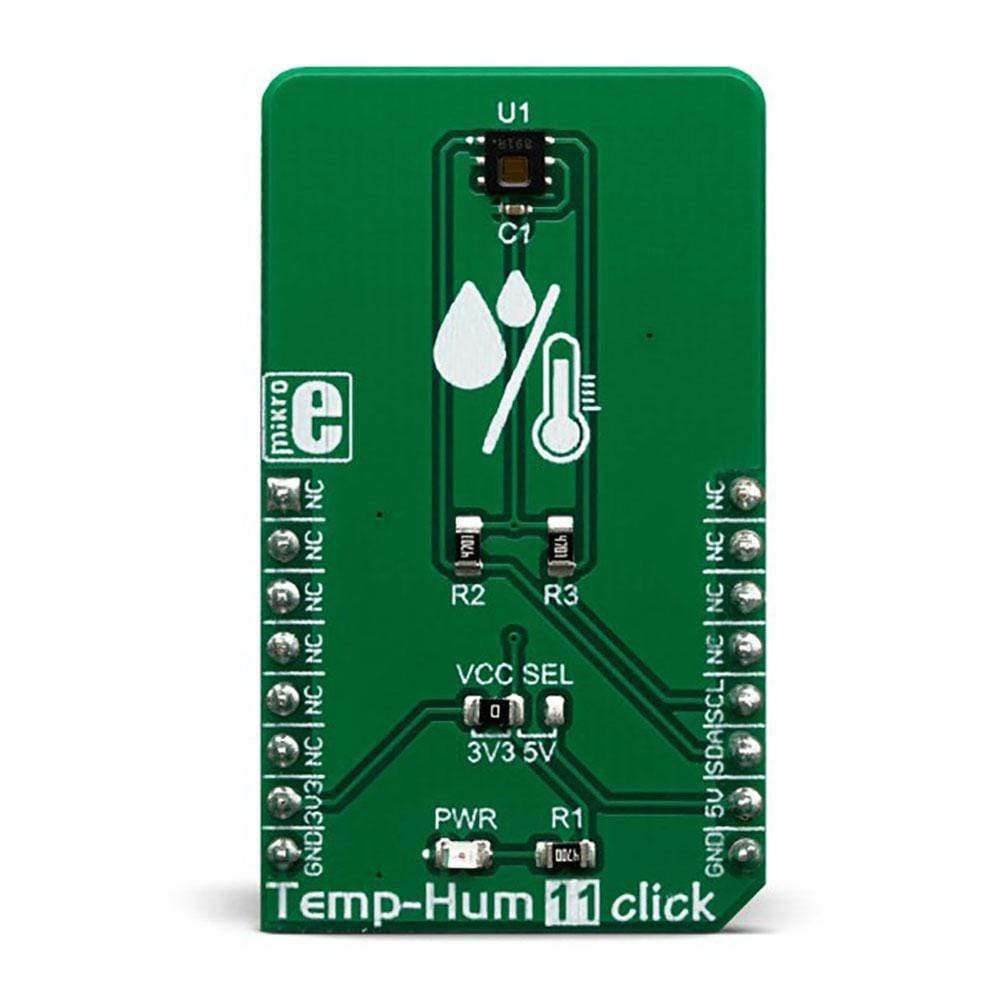
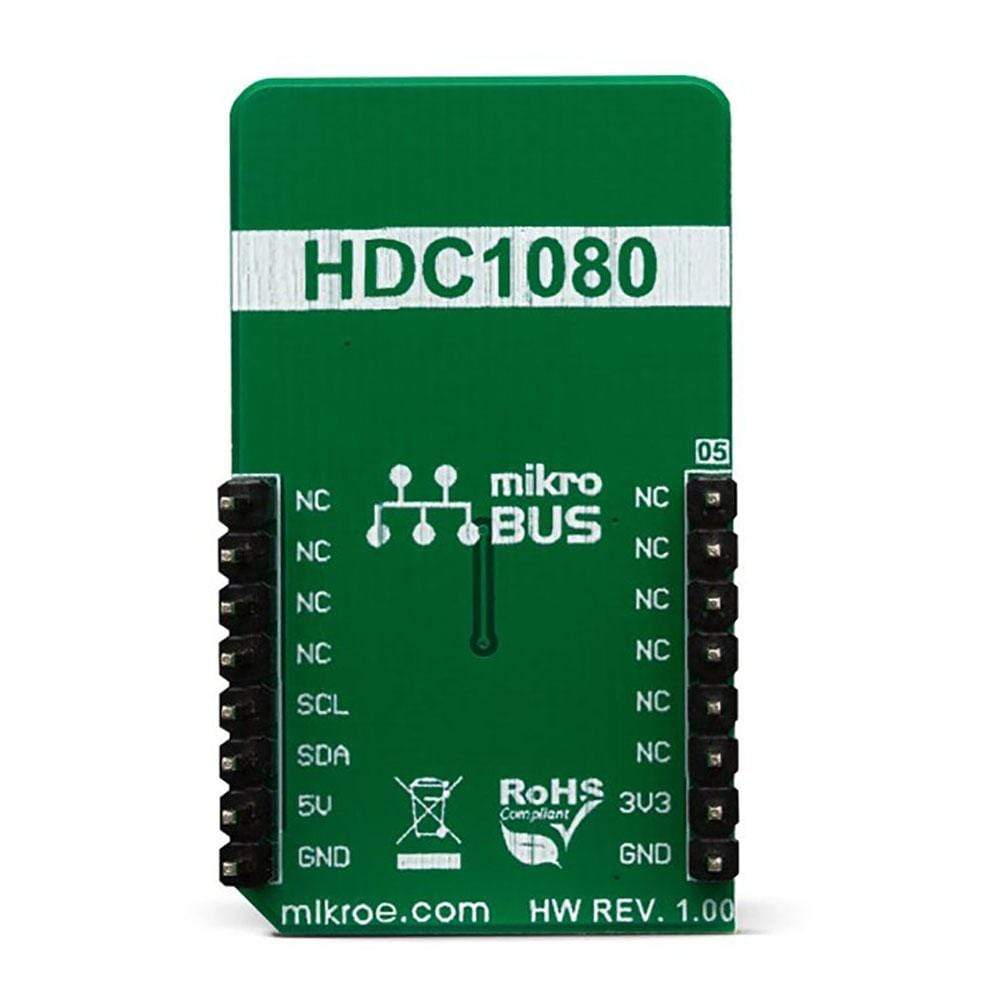
Overview
The Temp&Hum 11 Click Board™ is a temperature and humidity sensing Click Board™, equipped with the HDC1080, a high accuracy digital humidity, and temperature sensor. Its key features are its low power consumption, and the measurement accuracy achieved with that much energy. The HDC1080 sensor can sense the relative humidity (RH) with the accuracy of ±2%, while the temperature can be sensed with the accuracy up to ±0.2⁰C. It has a 14-bit measurement resolution, and it can be operated over a wide supply voltage range, allowing it to be interfaced with both 5V and 3.3V MCUs with no additional components required
Downloads
Le Temp&Hum 11 Click Board™ est un Click Board™ de détection de température et d'humidité, équipé du HDC1080, un capteur numérique d'humidité et de température de haute précision. Ses principales caractéristiques sont sa faible consommation d'énergie et la précision de mesure obtenue avec autant d'énergie. Le capteur HDC1080 peut détecter l'humidité relative (HR) avec une précision de ±2 %, tandis que la température peut être détectée avec une précision allant jusqu'à ±0,2⁰C. Il a une résolution de mesure de 14 bits et peut fonctionner sur une large plage de tension d'alimentation, ce qui lui permet d'être interfacé avec des microcontrôleurs 5 V et 3,3 V sans aucun composant supplémentaire requis
| General Information | |
|---|---|
Part Number (SKU) |
MIKROE-3469
|
Manufacturer |
|
| Physical and Mechanical | |
Weight |
0.018 kg
|
| Other | |
Country of Origin |
|
HS Code Customs Tariff code
|
|
EAN |
8606018715046
|
Warranty |
|
Frequently Asked Questions
Have a Question?
Be the first to ask a question about this.

